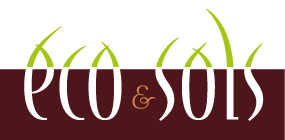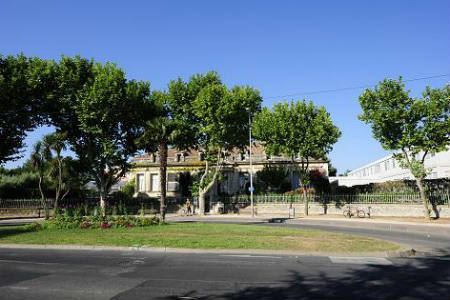 Eco&Sols is on the La Gaillarde campus of Montpellier SupAgro and most of its personnel work in buildings 12 and 13.
Eco&Sols is on the La Gaillarde campus of Montpellier SupAgro and most of its personnel work in buildings 12 and 13.
The 3 research themes of Eco&Sols are covered, as well as the 2 transversal disciplines.
Unlike the sites in developing countries, the Montpellier site is mainly concerned with experiments in controlled conditions, soil incubation, including tropical soils in a quarantine laboratory, plant cultures and cultivation of macrofauna in various mesocosms, greenhouses and growth chambers.
Most of the field trials are carried out in the experimental sites of the INRA DiaScope Experimental Unit in Mauguio, south of Montpellier, in particular on the OC (Organic/Conventional) experimental site, where 10 ha were converted to organic farming in 2008, as well as using a system for studying Mediterranean agroforestry subject to water stress that is being set up.
Many of the activities of the Montpellier site are concerned with observations or experiments carried out in a network of plots belonging to farmers or forestry stands in various regions of France as well as trials in agronomy sites such as the long term phosphate fertiliser trial carried out by INRA in Toulouse-Auzeville.
Eco&Sols has five laboratories in Montpellier which provide services for all the experimental and analytical activities of the Montpellier site as well as undertaking many analyses for the various sites in developing countries.
Life science laboratory
This laboratory is mainly concerned with facilities management and producing experimental devices for culture in controlled conditions (micro- and mesocosms). The main facility comprises a growth chamber with shelf area of 6 m2 and a containment level 2, air-conditioned greenhouse with a shelf area of 18 m2.
The EcoTrop project which began in 2016 will include a confined growth chamber that can be used to control CO2 concentrations to simulate climate change. This laboratory also carries out plant morphometric analyses, in particular of roots, using digitising tablets and WinRhizo, a complete plant root measurement system, as well as field experiments around Montpellier and in the south of France.
[accordion]
[item title=" Further details > "]
Equipement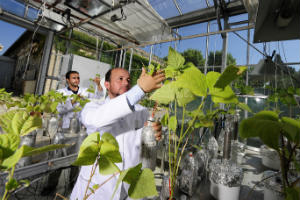
- Facis climatic test chamber and control unit
- Confinement level 2 greenhouse
- Microbial culture laboratory (preparation of inocula)
- Laminar flow cabinets
- Incubators
- Autoclaves
- Minirhizotron tubes, scanner and WinRhizo system
- Macro- and micro-electrodes for measuring pH
- Licor (CO2 analyses)
- Plant and soil mills (ball mill, knife mill)
Capabilities
- pH measurements
- Field CO2 measurements
- Monitoring root dynamics in minirhizotron tubes and in a rhizotron
- Microbial cultures (nitrogen fixing and phosphorus solubilising bacteria and mycorrhizal fungi on gel or liquid medium)
Lab leader Gérard Souche
[/item]
[/accordion]
BioSolTrop laboratory
This containment level 2 laboratory studies organic matter, in particular using near infrared (NIRS) and mid infrared (MIRS) spectrometry, and particle size fractionation and densitometry. Soil biological activities are characterised by measuring biomass and microbial activities. An elutriator is used to extract soil nematodes which can then be identified and quantified.
The laboratory was accredited to handle soils imported from other countries in 2008. Accreditation applies mainly to tropical soils.
The laboratory has two soil libraries, one of which is in a containment level 2 facility.
[accordion]
[item title=" Further details > "]
Equipement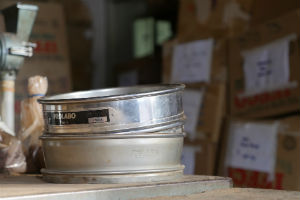
- Elemental CHN analyser
- Analyser for total Carbon and Nitrogen in solution
- Near infrared NIRS and mid infrared MIRS spectrometers
- Micro-katharometer
- Stoves
- Elutriator
Capabilities
- Elemental C and N analyses (soils and plants) and TOC/TN in solution
- Particle size fractionation of soil organic matter
- IR spectroscopic analyses (NIRS and MIRS)
- C, N and P microbial biomass analyses
Lab leader Jean Larvy Delarivière
[/item]
[/accordion]
Biochemistry laboratory
This laboratory develops techniques and methods for studying biomolecules in various biochemical fields, in particular proteins and enzymes. It is classified as containment level 2 and is, therefore, able to study hazardous proteins such as prions and the avian flu virus and the possibility of extending research to other biomolecules may be considered.
[accordion]
[item title=" Further details > "]
Equipement
- Microplate readers (absorbance and fluorescence)
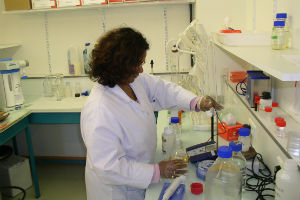
- Infrared spectroscopy
- Biological safety cabinet
- Orbital incubator
- Peltier thermal cycler
- Electrophoresis equipment
- Liquid chromatograph
- Dynamic Light scattering instrument
Capabilities
- Production, extraction and analysis of proteins
- Microrespiration (MicroRespTM)
- Microbiology
- Chromatography
- Gene expression localisation
- Molecular histology (in situ hybridisation and real time in situ PCR)
Lab leader Josiane Abadie
[/item]
[/accordion]
Genetic biology laboratory
This laboratory implements and develops genetic techniques for the characterisation of the genetic and functional diversity of soil microbial communities. This scientific approach sets out to understand the biological processes and interactions involved in carbon and main N and P nutrient cycles.
[accordion]
[item title=" Further details > "]
Equipement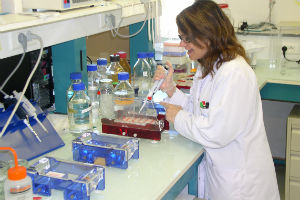
- PCR Bio-Rad CFX96
- Thermal cyclers
- Fastprep mill
- DGGE
- -80°C freezer
- Refrigerated incubator
Capabilities
- Quantification of the genes involved in C, N and P cycles,bacterial phyla
- Quantitative genetic analysis of the colonisation rates of roots by fungi
- Quantitative analysis of the colonisation rates of roots by arbuscular mycorrhiza
- Characterisation of microbial diversity by DGGE
Lab leader Anne-Laure Pablo
[/item]
[/accordion]
Physical and chemical laboratory
This laboratory undertakes chemical analyses of mineral elements, in particular N and P, and organic compounds in soils, plants and solutions. The methods used range from microwave mineralisation to UV/visible colorimetry, high performance liquid chromatography (HPLC) and high pressure ion chromatography (HPIC).
[accordion]
[item title=" Further details > "]
Equipement
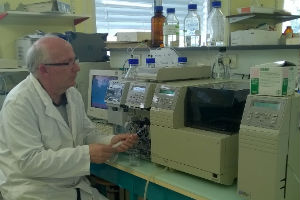 Skalar continuous flow analyser for measuring mineral N: Ammonium (NH4), Nitrate-Nitrite (NO3-NO2)
Skalar continuous flow analyser for measuring mineral N: Ammonium (NH4), Nitrate-Nitrite (NO3-NO2)- HPLC (UV and fluorescence detectors)
- HPIC (conductivity detector)
- Microwave mineraliser
Capabilities
- Mineral N
- Total P in the soil and plants
- Soil available P (Olsen method)
- Soil organic P
- Analysis of organic acids (carboxylic)
- Ergosterol assays
- Analysis of plant tannins
- Biochemical analysis of plant residues (Van Soest)
Animateur Jean-Marc Souquet
[/item]
[/accordion]
Research projects
Partners
Academic : UMR AGAP, AMAP, CEFE, LSTM, SYSTEM et UE DiaScope à Montpellier, UMR AGIR et UE Auzeville (Toulouse), UMR LEM (Lyon), UMR GQE (Versailles)
Private: Elisol, Alcina, Vlahoriz, Agroof
Publications
Betencourt, E., Duputel, M., Colomb, B., Desclaux, D., Hinsinger, P., 2012. Intercropping promotes the ability of durum wheat and chickpea to increase rhizosphere phosphorus availability in a low P soil. Soil Biology and Biochemistry 46, 181-190.
Cambou, A., Cardinael, R., Kouakoua, E., Villeneuve, M., Durand, C., Barthès, B.G., 2016. Prediction of soil organic carbon stock using visible and near infrared reflectance spectroscopy (VNIRS) in the field. Geoderma 261, 151-159.
Cardinael, R., Mao, Z., Prieto, I., Stokes, A., Dupraz, C., Kim, J.-H., Jourdan, C., 2015. Competition with winter crops induces deeper rooting of walnut trees in a Mediterranean alley cropping agroforestry system. Plant and Soil 391, 219-235.
Cardinael, R., Chevallier, T., Barthès, B., Saby, N., Parent, T., Dupraz, C., Bernoux, M., Chenu, C., 2015. Impact of alley cropping agroforestry on stocks, forms and spatial distribution of soil organic carbon - A case study in a Mediterranean context. Geoderma 259-260, 288-299.
Clairotte, M., Grinand, C., Kouakoua, E., Thébault, A., Saby, N., Bernoux, M. and Barthès, B.G., 2016. National calibration of soil organic carbon concentration using diffuse infrared reflectance spectroscopy. Geoderma 276: 41-52.
Coll, P., Le Cadre, E., Blanchart, E., Hinsinger, P., Villenave, C., 2011. Organic viticulture and soil quality: A long-term study in Southern France. Applied Soil Ecology 50, 37-44.
Coulis, M., Bernard, L., Gérard, F., Hinsinger, P., Plassard, C., Villeneuve, M., Blanchart, E., 2014. Endogeic earthworms modify soil phosphorus, plant growth and interactions in a legume–cereal intercrop. Plant and Soil 379, 149-160.
Salome, C., Coll, P., Lardo, E., Villenave, C., Blanchart, E., Hinsinger, P., Marsden, C., Le Cadre, E., 2014. Relevance of use-invariant soil properties to assess soil quality of vulnerable ecosystems: The case of Mediterranean vineyards. Ecological Indicators 43, 83-93.
Staunton, S., Razzouk, R., Abadie, J., Quiquampoix, H., 2012. Water-extractable soil organic matter inhibits phosphatase activity. Soil Biology & Biochemistry 55, 14-16.
Tang, X., Bernard, L., Brauman, A., Daufresne, T., Deleporte, P., Desclaux, D., Souche, G., Placella, S., Hinsinger, P., 2014. Increase in microbial biomass and phosphorus availability in the rhizosphere of intercropped cereal and legumes under field conditions. Soil Biology & Biochemistry 75, 86-93.
Contact
Campus SupAgro, Batiment 12, 2 Place Viala, F-34060 Montpellier cedex 2 FRANCE
Tel.: +33(0)4 99 61 21 01 / Fax: + 33(0)4 99 61 21 19




